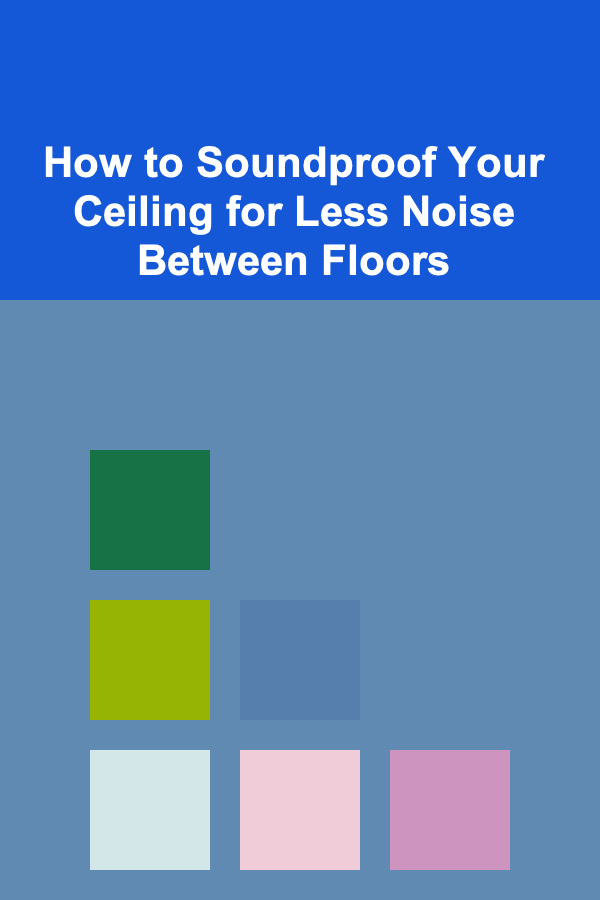
How to Use Typography Effectively on Wine Bottle Labels
ebook include PDF & Audio bundle (Micro Guide)
$12.99$11.99
Limited Time Offer! Order within the next:
Not available at this time

Typography, the art and technique of arranging type, is a crucial aspect of graphic design that influences how a message is communicated. In the context of wine bottle labels, typography plays an essential role in conveying the personality of the wine, attracting consumers, and setting the tone for the overall brand experience. Whether it's a luxury vintage, a casual everyday wine, or a new craft label, the typeface and design elements on a bottle label can greatly influence how the product is perceived by the market.
In this article, we will explore the importance of typography on wine bottle labels, the principles behind effective type usage, and best practices for integrating typography into the label design to create an impactful and memorable impression.
Understanding the Importance of Typography on Wine Labels
Wine labels are not just decorative elements; they are an essential part of the branding, marketing, and storytelling of a wine product. Typography, being one of the most prominent elements on a wine label, is responsible for several key functions:
- Brand Identity: The typeface you choose can immediately communicate the nature of the wine, whether it's a high-end product, a vintage, or a fun and experimental wine. Typography contributes to the overall brand identity and sets expectations for the consumer.
- Visual Appeal: Typography can influence how the wine is perceived visually. The right font can create an aesthetic that aligns with the wine's character, whether it's sophisticated, playful, rustic, or modern.
- Legibility and Readability: It's essential that the type on the wine bottle is readable from a distance. Consumers should be able to easily identify the wine and read essential details, such as the wine's name, vintage, region, and varietal.
- Attraction and Differentiation: With countless wine bottles lining the shelves, typography can be the deciding factor in a consumer's choice. A well-designed label stands out and catches the attention of potential buyers, helping your wine brand differentiate itself from competitors.
Key Typography Principles for Wine Bottle Labels
A. Choose the Right Typeface for the Wine's Character
The first step in effective typography is selecting the appropriate typeface. Fonts evoke emotions and can instantly convey the vibe of the wine. For example, a serif typeface like Times New Roman suggests tradition and class, while a modern sans-serif font like Helvetica communicates cleanliness and simplicity.
When choosing the right typeface, consider the following:
- Luxury Wines: For premium wines, classic serif fonts or elegant script fonts work well. These fonts convey a sense of sophistication, timelessness, and heritage.
- Modern Wines: For contemporary wines or new brands aiming to be seen as cutting-edge, sans-serif fonts with clean lines and boldness are a good fit. A more minimalistic approach can suggest modernity and innovation.
- Organic or Natural Wines: Handwritten or rustic-style typefaces can evoke a natural, artisanal feel. This works well for wines that emphasize sustainability, local production, and organic farming practices.
- Fun and Experimental Wines: For wines that focus on playful, quirky branding (often found in fruit-forward or lower-priced wines), more playful or custom typefaces can be used. Bright, bold fonts may communicate the wine's youthful energy and adventurous spirit.
B. Pairing Typefaces
While choosing a single typeface for a wine label may work in some cases, pairing two or more typefaces can elevate the design and add depth. When pairing fonts, it's important to create contrast without overwhelming the design. A good rule of thumb is to combine a serif font with a sans-serif one, or a bold font with a lighter, more delicate one.
- Contrast: Use contrasting fonts to emphasize specific parts of the label, like the wine's name, region, or year. For example, pairing a script font for the wine name with a simple sans-serif font for the vintage or producer can create balance and readability.
- Hierarchy: Typeface pairing helps establish a clear hierarchy. The wine name should stand out most prominently, while secondary information (like the varietal or producer's name) should be displayed in a less dominant font.
- Consistency: Even when pairing fonts, ensure that there is consistency in the overall feel of the design. Using too many mismatched fonts can create visual confusion and detract from the label's overall harmony.
C. Consider the Label Layout and Space
Effective typography depends not only on the fonts but also on how the type is arranged and spaced. The layout of the text on a wine label can determine how easily the information is processed by the consumer.
- Whitespace: The use of whitespace or negative space around text is essential for creating a clean and organized label. Avoid overcrowding the label with too much text, as it can make the design feel cluttered. Proper use of whitespace will ensure that the typography stands out and is easy to read.
- Alignment: Consistency in text alignment plays a major role in the overall look of the label. Central alignment is common for names and key information, while left or right alignment may be used for supporting details like the region, year, or producer's name.
- Text Size and Spacing: Adjust the text size appropriately for the information being conveyed. The wine's name should be the largest, with secondary details like the varietal and vintage following in smaller sizes. Adjust the letter-spacing and line-spacing to ensure legibility. Too tight spacing can make the text difficult to read, while too loose spacing can lead to a fragmented look.
D. Create a Visual Hierarchy with Typography
Visual hierarchy refers to how the elements of the design are arranged to guide the viewer's eye in a natural, logical flow. Typography is one of the most powerful tools for establishing hierarchy on a wine label.
- Main Focus: The most important elements, such as the wine's name, should be the focal point of the label. The name should be in the largest, boldest typeface to immediately grab attention.
- Secondary Information: Once the wine's name is established, guide the viewer's eye to the next most important pieces of information, like the region, vintage, or varietal. These can be displayed in a smaller, less bold font but should still be prominent enough to be easily readable.
- Supporting Details: Supporting information, such as the alcohol percentage, producer's name, or tasting notes, should be displayed in the smallest font, ensuring that it doesn't overwhelm the other elements of the label.
E. Ensure Legibility and Readability
One of the most crucial aspects of typography on wine bottle labels is ensuring that the text is legible from a distance. Consumers should be able to quickly and easily read the wine's name, varietal, and other key details.
- Contrast: Ensure there is a high contrast between the text and the background. If the label background is dark, use light-colored text, and vice versa.
- Font Weight and Style: Use bold fonts for key information to help it stand out. Avoid using too many decorative or script fonts for essential details, as these can compromise legibility.
- Size and Spacing: Make sure that the font size is large enough to be readable, especially if the wine is displayed on a shelf in a retail environment. Adequate letter-spacing and line-height also contribute to readability.
Typography and Branding Consistency
Typography on wine labels should be part of a larger branding strategy. A wine label's typeface should align with the overall look and feel of the brand's visual identity. This includes consistency with the brand's logo, packaging design, and even website.
- Brand Guidelines: If your wine brand already has established brand guidelines, the typography on the label should adhere to those guidelines to maintain a cohesive look across all marketing materials.
- Storytelling Through Typography: Wine labels often tell a story, whether it's about the vineyard's history, the winemaking process, or the specific terroir of the region. Typography should complement this narrative by reinforcing the mood or theme of the story being told.
Typography for Different Wine Types
Different types of wines call for different typography choices. The fonts used for a red wine label might be different from those used for a sparkling wine or a white wine. Here's a breakdown of how typography can vary based on wine types:
A. Red Wines
Red wine labels often evoke feelings of elegance, maturity, and richness. Typography for red wines should reflect these qualities.
- Fonts: Traditional serif fonts or script typefaces are common choices for red wine labels, especially for premium or aged wines.
- Design Elements: Use of bold, elegant fonts and a sophisticated layout helps to emphasize the richness of the wine.
B. White Wines
White wine labels typically convey freshness, lightness, and crispness. Typography for white wines should reflect these characteristics.
- Fonts: Clean sans-serif fonts, modern scripts, or more minimalist typography works well with white wines.
- Design Elements: White wine labels often employ more subtle design elements, such as light backgrounds and airy typography.
C. Sparkling Wines
Sparkling wine labels are often festive and celebratory, reflecting the bubbly nature of the drink.
- Fonts: Elegant, sophisticated fonts with a touch of playfulness can be ideal for sparkling wine labels.
- Design Elements: Typography should be glamorous but not overly ornate, with space for the bubbles or effervescence to be represented visually through the font style.
Conclusion
Typography is an essential element of wine label design that plays a critical role in attracting consumers, conveying brand identity, and ensuring that the product's message is communicated effectively. By considering key factors such as the wine's character, target audience, and the principles of hierarchy, spacing, and legibility, wine brands can use typography to create labels that are not only visually appealing but also functional and memorable.
When used effectively, typography on wine bottle labels can elevate a product's image, tell a compelling story, and create a connection with consumers. The right font can help set the tone for the wine, making it stand out on the shelf and in the minds of wine lovers everywhere.

How to Build a Checklist for Preparing Healthy Lunches for School
Read More
How to Build a Checklist for Restocking Inventory with Multiple Locations
Read More
How to Choose the Right Home Rental Property for Your Needs
Read More
How to Mix and Match Thrifted and New Decor
Read More
How to Soundproof Your Ceiling for Less Noise Between Floors
Read More
How to Participate in DeFi Protocols on the Blockchain
Read MoreOther Products

How to Build a Checklist for Preparing Healthy Lunches for School
Read More
How to Build a Checklist for Restocking Inventory with Multiple Locations
Read More
How to Choose the Right Home Rental Property for Your Needs
Read More
How to Mix and Match Thrifted and New Decor
Read More
How to Soundproof Your Ceiling for Less Noise Between Floors
Read More